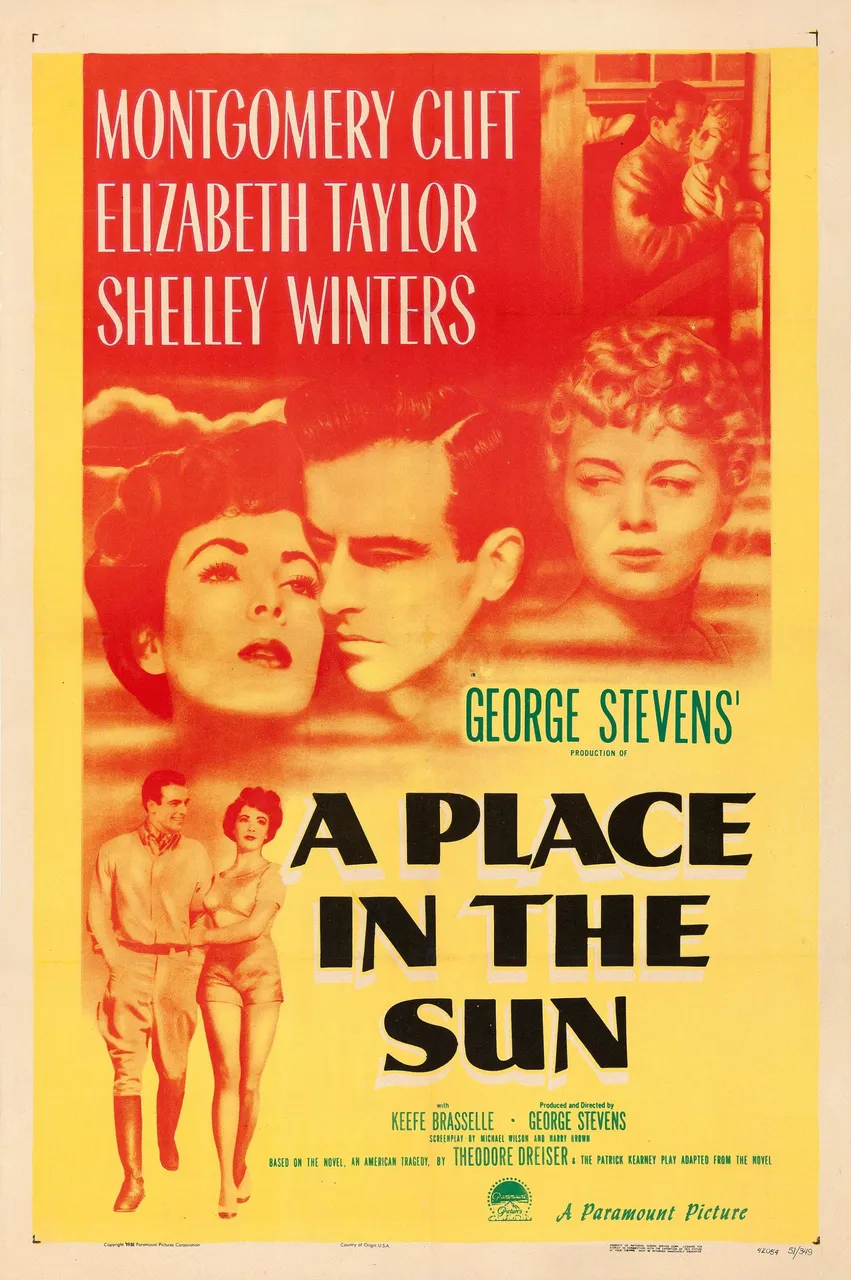
A Place in the Sun is a 1951 American drama film based on the 1925 novel "An American Tragedy" by Theodore Dreiser. The film was directed by George Stevens and features a star-studded cast, including Montgomery Clift, Elizabeth Taylor, Shelley Winters, and Anne Revere. The story revolves around a working-class young man who becomes entangled with two women: one who works in his wealthy uncle's factory and the other a beautiful socialite.
Plot
A Place in the Sun is a 1951 American drama film based on the 1925 novel "An American Tragedy" by Theodore Dreiser. The story revolves around a working-class young man, George Eastman, who becomes entangled with two women: one who works in his wealthy uncle's factory, and the other a beautiful socialite. As George ascends the ranks of the company, he becomes romantically involved with co-worker Alice Tripp. However, when he meets socialite Angela Vickers, he quickly falls for her, leading to a tragic love triangle. The film is known for its high-quality production design, cinematography, and the powerful performances of the lead actors, Montgomery Clift, Elizabeth Taylor, and Shelley Winters.
Trailer
Cast
Full Cast of A Place in the Sun (1951):
Starring:
- Montgomery Clift as George Eastman
- Elizabeth Taylor as Angela Vickers
- Shelley Winters as Alice Tripp
Supporting:
- Raymond Burr as Marlowe
- Keefe Brasselle as Earl
- Anne Revere as Hannah Eastman
- Luther Adler as Frank Fraleigh
- Fred Clark as District Attorney
- Shepperd Strudwick as Attorney Barnes
- Taylor Holmes as Judge
- Alan Reed as Defense Attorney
- Kathryn Grayson (singing voice for Shelley Winters)
Uncredited:
- Leon Ames as Jury Foreman
- Philip Bourneuf as Defense Attorney
- Virginia Brissac as Woman in Street
- Douglas Croft as Minor Role
- Charles Dingle as Defense Attorney
- Ivan Dobrin as Minor Role
- Paul Harvey as Reporter
- Emory Parnell as Minor Role
- John Qualen as Minister
- Frank Wilcox as Minor Role
Director: George Stevens
Writer: Theodore Dreiser, Patrick Kearney, Michael Wilson, Harry Brown
Distributor: Paramount Pictures
Genre: Drama
Release Date (Theaters): Aug 28, 1951
Release Date (Streaming): Jun 6, 2014
Themes
The film A Place in the Sun explores themes of social class, love, and the American Dream. It delves into the complexities of relationships, the struggle for upward mobility, and the moral dilemmas faced by the characters.
Reception
Upon its release in 1951, A Place in the Sun was praised for its sweeping narrative and emotional depth. It received positive reviews for its willingness to engage with difficult and contentious ideas, although it has not been as widely canonized as some other films of the era. The movie's thematic elements pushed the boundaries of the Hays Code regulations, and while it was well-received initially, it has not achieved the same level of recognition as some of its contemporaries.
Challenges Faced
Filming for A Place in the Sun began in October 1949. The movie had to navigate the production code and carefully work within its confines, particularly in its handling of sensitive topics such as abortion. The production likely faced challenges in balancing the film's modernized ideas with the prevailing norms of the 1950s.
Settings, Visual Styles, and Techniques
The film features striking visual styles and techniques, including high-quality production design, black-and-white cinematography, and lavish costumes by Edith Head. The settings range from the working-class environment of a factory to the opulence of high society, effectively capturing the contrast between the two worlds.
Trivia and Fun Facts
- The film was originally titled "An American Tragedy" but was changed to A Place in the Sun by Paramount to convey a more positive message.
- Franz Waxman composed several cues and themes for the film.
- A Place in the Sun has not achieved the same level of recognition as some other films of its time, despite its significant thematic and artistic achievements.
General:
Page by @iskafan